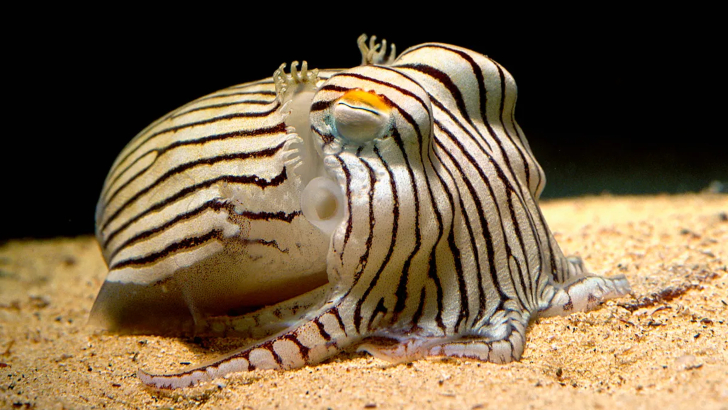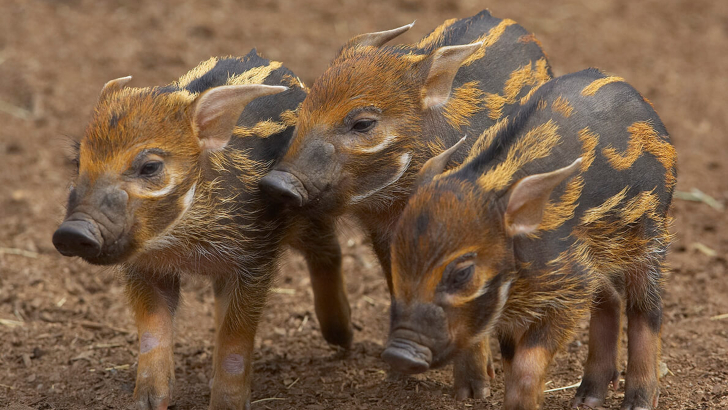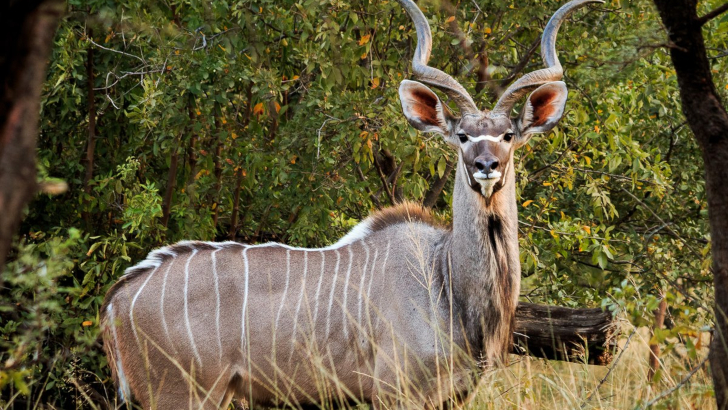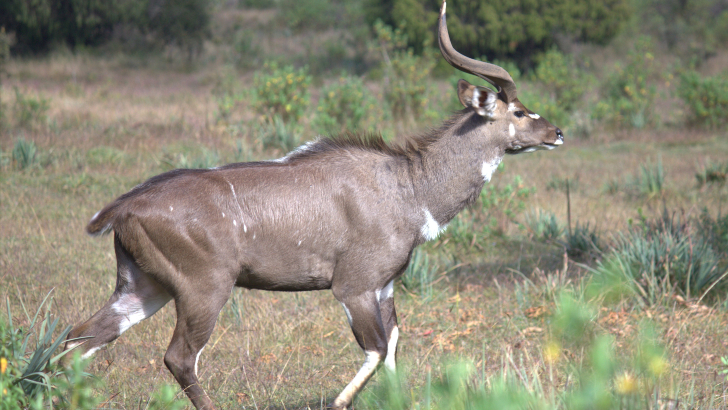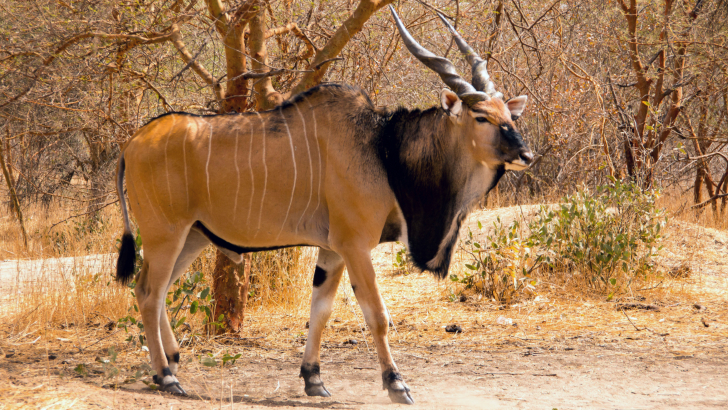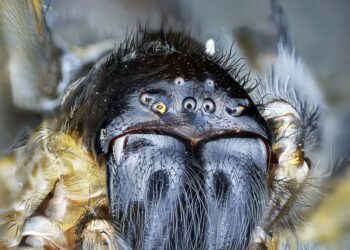Some animals are extremely fast and can outrun humans. Some have jaws that are strong enough to crush bone. Some people can climb trees, fly, and blend in. Striped animals, for example, frequently use their coloration as camouflage. And it can be used to hide from predators just as quickly as it can to hide from prey. Some strips warn you that an animal is dangerous, while others may help you find a mate. Some may serve no purpose that we are aware of. In any case, there are many striped animals in the world. How many do you think you'll be able to identify? It's time to find out!
It’s not the king of the jungle, but it’s close. What is it?
Tiger
The tiger (Panthera tigris) is the largest living cat and a member of the Panthera genus. Its dark vertical stripes easily identify it on its orange fur and white underside. It is an apex predator that primarily feeds on ungulates like deer and wild boar. It is a territorial and generally solitary but social predator that requires large contiguous areas of habitat to support its prey requirements and offspring rearing. Tiger cubs spend about two years with their mother before becoming independent and leaving her home range to establish their own.
If you don’t have one of these, chances are someone else in your neighborhood does. What exactly is it?
Tabby Cat
A tabby is any domestic cat with a distinctive ‘M’-shaped marking on its forehead; stripes by its eyes and across its cheeks, along its back, and around its legs and tail; and (depending on the tabby type), distinctive striped, dotted, lined, flecked, banded, or swirled patterns on the body—neck, shoulders, sides, flanks, chest, and abdomen. “Tabby” is not a cat breed, but a coat type is seen in almost all genetic lines of domestic cats, regardless of status.
These creatures can now be found all over the world, but they originated in Asia. What is it?
Honeybee
A honey bee (also spelled honeybee) is a eusocial flying insect of the bee clade that is native to Afro-Eurasia. Humans became responsible for the current cosmopolitan distribution of honey bees after bees spread naturally throughout Africa and Eurasia, introducing multiple subspecies into South America (early 16th century), North America (early 17th century), and Australia (early 19th century).
The pajama tang is another name for this animal. Name it!
Striped surgeonfish
The striped surgeonfish is a member of the surgeonfish family Acanthuridae. Other common names include blue-banded surgeonfish, blue-lined surgeonfish, clown surgeonfish, pajama tang, striped surgeonfish, and zebra surgeonfish.
These little guys can be found all over North America, with one species even making its way to Siberia. Can you name it?
Chipmunk
Chipmunks are small, striped rodents in the Sciuridae family. Chipmunks are found in North America, except for the Siberian chipmunk, primarily in Asia. Chipmunks are classified as either a single genus, Tamias, or as three genera: Tamias, of which the eastern chipmunk is the only living member; Eutamias, of which the Siberian chipmunk is the only living member; and Neotamias, which includes the 23 remaining, primarily western, species.
Which of these stinky animals do you want to stay away from?
Skunk
Skunks are mammals in the Mephitidae family. They are well-known for their ability to spray a robust and unpleasant-smelling liquid from their anal glands. Skunks vary in appearance from black-and-white to brown, cream, or ginger, but they all have warning coloration. Skunks are related to polecats and other weasels, but their closest relatives are the Old World stink badgers.
Which animal has the appearance of a zebra but is more closely related to a giraffe?
Okapi
The okapi, also known as the forest giraffe, Congolese giraffe, or zebra giraffe, is a central African artiodactyl mammal endemic to the northeast Democratic Republic of the Congo. Although the okapi has zebra-like striped markings, it is closely related to the giraffe. The only living members of the Giraffidae family are the okapi and the giraffe.
When attacked, this animal usually plays dead. Do you have any idea what it is?
Striped hyena
The striped hyena (Hyaena hyaena) is a hyena species found in North and East Africa, the Middle East, the Caucasus, Central Asia, and India. It is the only living member of the genus Hyaena. The IUCN classifies it as near-threatened because the global population is estimated to be less than 10,000 mature individuals, and it continues to face deliberate and incidental persecution, as well as a decrease in its prey base, putting it on track to meet a 10% decline over the next three generations. It is also Lebanon’s national animal.
Which of these poisonous creatures can be found on the seafloor?
Striped pyjama squid
Sepioloidea lineolata, also known as the striped pyjama squid or the striped dumpling squid, is a bobtail squid found in Australia’s Indo-Pacific Oceans. It is not quite a cuttlefish because it lacks a cuttlebone, but it is otherwise identical to cuttlefish. As a result, it is a sepioid rather than a true cuttlefish.
You’d have to go to Madagascar to see this animal in the wild. What is it?
Ring-tailed lemur
The ring-tailed lemur (Lemur catta) is a large strepsirrhine primate known for its long, black and white ringed tail. It is the only member of the Lemur genus and belongs to the Lemuridae family, one of five lemur families. It, like all lemurs, is endemic to Madagascar and critically endangered. It is known locally in Malagasy as maky and lives in gallery forests to spiny scrub in the island’s southern regions. It is the most terrestrial of the extant lemurs and omnivorous. The animal is diurnal, meaning it is only active during the day.
Do you know which snake is one of the most common in North America?
Garter snake
The garter snake is a common name for small to medium-sized snakes of the genus Thamnophis, which belongs to Colubridae. Thamnophis species are native to North and Central America, ranging from the subarctic plains of Canada to Costa Rica. Garter snakes are highly variable in appearance, with approximately 35 recognized species and subspecies.
This skunk-like creature can be found in Africa. Name it!
Striped polecat
The striped polecat, also known as the African polecat, zoril, zorille, zorilla, Cape polecat, and African skunk, is a skunk-like member of the Mustelidae family (of the family Mephitidae). The name “zorilla” is derived from the Spanish word “zorro,” which means “fox.” It prefers dry climates, such as savannahs and open country in Central, Southern, and Sub-Saharan Africa, except the Congo basin and more coastal areas in West Africa.
Do you know which of these striped creatures is sometimes referred to as a zebra mouse?
Striped grass mouse
Lemniscomys, also known as striped grass or zebra mice, is an African genus of murine rodents. Most species are from Sub-Saharan Africa; L. Barbarus is found only north of the Sahara. They are generally found in grassy habitats, but there is some habitat differentiation between them where several species overlap in distribution.
Tell us the name of this nocturnal herbivore.
Bongo
The bongo is a herbivorous, mostly nocturnal forest ungulate. The striking reddish-brown coat, black and white markings, white-yellow stripes, and long, slightly spiraled horns distinguish bongos from other animals. They are the only tragelaphid species with horns of both sexes. They live in mosaics of dense African forests and have complex social interactions. They are the third-largest antelope in the world and are native to Africa.
As they age, these guys lose their stripes. What are they?
Wild boar piglets
Like many pig-related species, wild boars have stripes when they are young and lose them as they age. Technically, the wild pigs you may encounter in North America are not wild boar but rather hybrids with feral pigs.
During the dry season, these animals have been observed eating watermelon. Name it!
Kudu
The kudus are two species of antelope in the genus Tragelaphus: Lesser kudu, Tragelaphus imberbis, of eastern Africa, and Greater kudu, Tragelaphus strepsiceros, of east and southern Africa. The two species look very similar, though the Greaters are larger.
Which of these animals eats termites almost exclusively?
Numbat
The numbat is an insectivorous marsupial known as the noombat or walpurti. It is nocturnal and feeds almost entirely on termites. The species was once common throughout southern Australia but is now limited to a few small colonies in Western Australia.
This creature is also known as the balbok. What is it?
Mountain nyala
The mountain nyala (Tragelaphus buxtoni), also known as the balbok, is an antelope found in high-altitude woodland in a small region of central Ethiopia. It is a monotypic species described by English naturalist Richard Lydekker in 1910. Males stand 120-135 cm (47-53 in) tall at the shoulder, while females stand 90-100 cm (35-39 in). Females weigh 150-200 kg and males weigh 180-300 kg (400-660 lb) (330–440 lb).
Which animal has been known to run at speeds exceeding 40 miles per hour?
Giant eland
The Lord Derby eland (Taurotragus derbianus) is an antelope that lives in open forests and savannas. John Edward Gray described it as a species of the family Bovidae and the genus Taurotragus in 1847. The giant eland is the largest species of antelope, measuring 220-290 cm in length (86.5–114 in). T. There are two subspecies. d. T. derbianus and T. derbianus d. gigas.
Which of these looks exactly like a poisonous animal despite the fact that it is not poisonous?
Harlequin snake eel
Myrichthys colubrinus, also known as the banded snake eel, ringed snake eel, or harlequin snake eel, is an Indo-Pacific snake eel. It does make an appearance in the aquarium trade on occasion. It can reach a length of 97 cm.
You did not pass the quiz! 
You need to review and explore the Animal Kingdom more.
This is obviously not your LUCKY DAY!
Check out our other quizzes; no one knows you might pass them.
You definitely know a lot about the Animal Kingdom.
[giveaway id=12098]








